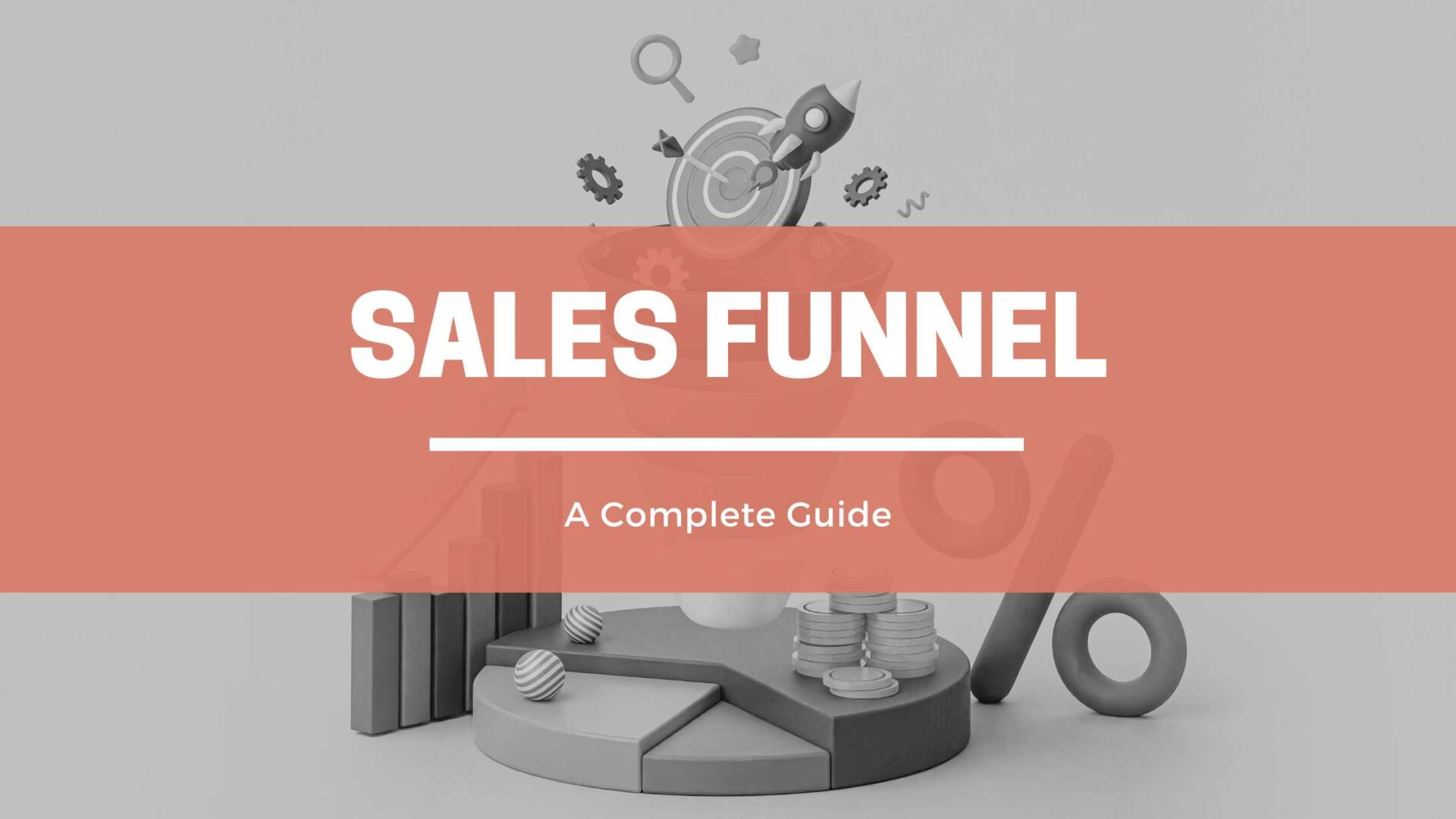In this article, we’ll explore the various stages of a sales funnel and provide tips for improving the efficiency and effectiveness of your sales process.
What is sales funnel?
A sales funnel is a visual representation of the stages of a sales process from beginning to end. It is called a “funnel” because it is wide at the top and narrow at the bottom, like a funnel. The purpose of a sales funnel is to track the progress of leads as they move through the sales process, and to identify any bottlenecks or issues that may be causing leads to drop out of the funnel.
What is an example of sales funnel?
An example of a sales funnel might include the following stages:
- Awareness: This is the top of the funnel, where the lead becomes aware of the product or service.
- Interest: At this stage, the lead expresses an interest in the product or service and begins to consider making a purchase.
- Evaluation: The lead evaluates the product or service and decides whether or not it is a good fit for their needs.
- Decision: The lead makes a decision to purchase the product or service.
- Action: The lead takes action and makes a purchase.
What is the benefit of sales funnel?
The benefit of a sales funnel is that it helps businesses understand where leads are dropping out of the sales process, so they can take steps to improve the process and increase conversions. It can also help businesses identify which marketing strategies are most effective at each stage of the funnel, so they can focus their efforts on the most promising tactics.
What is the importance of sales funnel?
The importance of a sales funnel is that it helps businesses understand the sales process and identify any bottlenecks or issues that may be causing leads to drop out. By tracking the progress of leads through the funnel, businesses can identify where they are losing the most leads and take steps to improve the process.
What is the function of sales funnel?
The function of a sales funnel is to track the progress of leads as they move through the sales process, from initial awareness of the product or service to the final purchase decision. It is a way to visualize the sales process and identify any bottlenecks or issues that may be causing leads to drop out.
What are the types of sales funnel?
There are several types of sales funnels, including the following:
- The traditional sales funnel, which consists of the stages of awareness, interest, evaluation, decision, and action.
- The marketing funnel, which is similar to the traditional sales funnel, but focuses on the marketing efforts that lead to the sale.
- The customer journey funnel, which is a more detailed version of the traditional sales funnel that includes additional stages, such as onboarding and retention.
- The event-driven funnel, which is used to track the progress of leads through a specific event, such as a webinar or trade show.
- The automated sales funnel, which uses technology to automate certain parts of the sales process, such as lead generation and follow-up.
How do you create a sales funnel?
To create a sales funnel, follow these steps:
- Define your target audience: Identify who your ideal customer is and what their needs and goals are.
- Identify your products or services: Determine what you will offer to your target audience to meet their needs and achieve their goals.
- Develop your marketing strategy: Determine how you will reach and engage your target audience, including the channels you will use and the messaging you will use to communicate with them.
- Create a lead generation plan: Determine how you will attract leads into your sales funnel. This may include tactics such as social media advertising, content marketing, and email marketing.
- Nurture leads: Once leads are in your funnel, you will need to nurture them with targeted content and follow-up communication to move them through the funnel.
- Convert leads: At the bottom of the funnel, you will need to close the sale and convert leads into customers.
What are the stages of sales funnel?
The stages of a sales funnel may vary depending on the specific business and industry, but common stages include:
Top of Funnel (TOFU)
The top of the funnel (TOFU) refers to the early stages of the sales process, when leads are just becoming aware of the product or service and are starting to consider making a purchase. This is the stage where businesses generate leads through marketing efforts such as social media advertising, content marketing, and email marketing.
Middle of Funnel (MOFU)
The middle of the funnel (MOFU) refers to the stage where leads are evaluating the product or service and deciding whether or not it is a good fit for their needs. This is the stage where businesses nurture leads with targeted content and follow-up communication, and where leads may request more information or a demonstration of the product or service.
Bottom of Funnel (BOFU)
The bottom of the funnel (BOFU) refers to the final stage of the sales process, where leads are ready to make a purchase decision. This is the stage where businesses close the sale and convert leads into customers.
Convert
Convert: This is the stage where leads are converted into customers, typically at the bottom of the funnel.
Deliver and delight
Deliver and delight: This is the stage where the product or service is delivered to the customer and their experience with the product or service is positive.
Retain and refer
Retain and refer: This is the stage where the customer continues to use the product or service and may refer others to it.
Expand and evangelize
Expand and evangelize: This is the stage where the customer becomes an advocate for the product or service and helps to promote it to others.
What is the most important part of the sales funnel?
The most important part of the sales funnel is the point at which leads are converted into customers, as this is the primary goal of the funnel. However, each stage of the funnel is important in its own way and contributes to the overall success of the sales process.
Who needs a sales funnel?
Almost any business that sells products or services can benefit from a sales funnel. A sales funnel can help businesses understand the sales process and identify any bottlenecks or issues that may be causing leads to drop out. It can also help businesses identify which marketing strategies are most effective at each stage of the funnel, so they can focus their efforts on the most promising tactics.
How do you promote a sales funnel?
To promote a sales funnel, businesses can use a variety of tactics, including:
- Content marketing: Creating and distributing valuable, relevant, and consistent content can help to attract and retain a clearly defined audience, and ultimately drive profitable customer action.
- Email marketing: Sending targeted and personalized emails to leads can help to nurture them through the funnel and move them closer to a purchase decision.
- Social media advertising: Using social media platforms to target specific audiences and promote products or services can help to generate leads and drive sales.
- Lead magnets: Offering free resources or incentives in exchange for contact information can help to attract leads into the funnel.
- Landing pages: Creating targeted and effective landing pages can help to convert leads into customers.
- A/B testing: Testing different versions of marketing materials and tactics can help to identify the most effective approaches for promoting a sales funnel.
How do you make a sales funnel better?
There are several ways to make a sales funnel better:
- Identify bottlenecks: Analyze the data in your sales funnel to identify any bottlenecks or issues that may be causing leads to drop out.
- Optimize your marketing efforts: Focus on the marketing tactics that are most effective at each stage of the funnel and allocate your resources accordingly.
- Improve the customer experience: Make sure the customer experience is seamless and enjoyable at every stage of the funnel. This can help increase conversions and reduce churn.
- Test and iterate: Try out new tactics and see what works best. Don’t be afraid to experiment and make changes to your sales funnel as needed.
What is healthy sales funnel?
A healthy sales funnel is one that has a high conversion rate and a low churn rate. It should also have a balanced number of leads at each stage of the funnel.
What is funnel strategy?
A funnel strategy is a plan for how to move leads through the sales funnel and convert them into customers. It should include a clear understanding of the target audience, the products or services being offered, and the marketing tactics that will be used to reach and engage leads. The goal of a funnel strategy is to increase conversions and generate revenue.

